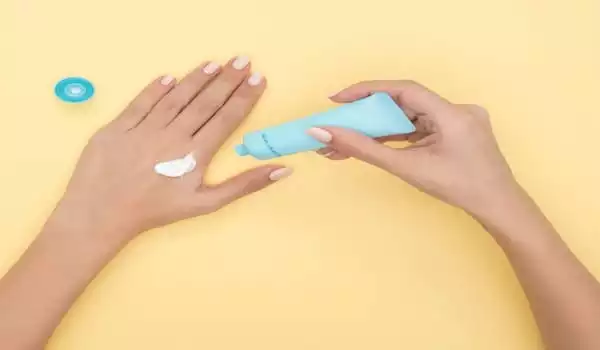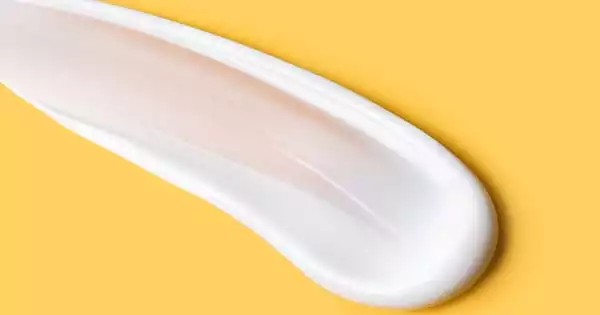A new study discovered a close correlation between the activity of free radicals and free iron in the skin, which causes skin to age prematurely after sun exposure. The researchers have also found antioxidants that may be added to skin care products to soak up the toxic iron, reducing UV damage.
All sunscreens and anti-aging lotions are lacking a critical element, and our skin will be significantly more protected from the damaging effects of the sun once this rich source of natural photoprotection is included. This is the conclusion of a new study on sun-related skin aging conducted at the University of Bath in the United Kingdom and published in the journal Antioxidants.
The missing ingredient is a form of antioxidant (a sort of stable molecule) found in nature. Experiments have demonstrated that these antioxidant molecules remove excess iron in cells, hence assisting cells in maintaining a healthy amount of free radicals (a type of unstable molecule). Free radicals and free iron are significantly associated to skin damage.
“By including these potent antioxidants in skin-care products and sunscreen formulations, and thus trapping free iron* (note), we can expect to get an unprecedented level of sun protection,” says Dr Charareh Pourzand of the University of Bath’s Department of Pharmacy & Pharmacology and the Centre for Therapeutic Innovation.
While the antioxidants we’ve identified perform well in the lab, they don’t always stay stable once they’re added to a cream. What is now required is for the bioactive compounds in these extracts to be standardised; once this has occurred, they may and should be included to products meant to protect the skin from aging.
Dr Charareh Pourzand
Scientists have known for a long time that iron deposits cause the look of aging, but the most recent study focuses on the interaction between free iron and free radicals in the skin. As a result of their findings, Dr. Pourzand recommends skin-care firms to investigate the possibility of including iron-trapping extracts in their products.
A number of iron-trapping natural extracts have already been identified in the Bath lab (these include several classes of botanical, fungal, and marine-based compounds, such as extracts from certain vegetables, fruits, nuts, seeds, bark, and flowers), but Dr Pourzand believes that more research is required before any of these compounds can be used commercially.
“While the antioxidants we’ve identified perform well in the lab, they don’t always stay stable once they’re added to a cream,” she says. “These extracts are derived from plants, and environmental factors influence their stability and long-term effectiveness — anything from the season in which they are grown, soil type, latitude, and harvest time can change the strength with which they can neutralize free radicals and work as iron traps.”
“What is now required is for the bioactive compounds in these extracts to be standardised; once this has occurred, they may and should be included to products meant to protect the skin from aging,” she says.

Sun exposure and skin aging
Sunscreens on the market today are either designed to block or absorb UV radiation. In doing so, they reduce the number of free radicals produced on the skin; these unstable molecules are responsible for skin damage and aging, a process known as oxidative stress. Free radicals cause harm by destroying DNA and other cell components, which can lead to cell death.
What has not been considered in sun-care and anti-aging formulations is the role of iron, both in directly harming the skin when it interacts with UV light and in exacerbating free radical damage.
“This needs to change,” says Dr Pourzand. “Formulations need to adapt and improve.”
The antioxidant chemicals discovered in Bath have the ability to protect the skin against both chronological aging (the natural deterioration in skin texture that occurs with age) and sun-mediated aging (known as photoaging).
Though the body requires iron to function properly, too much (or too little) iron is detrimental or even fatal to our cells. To protect themselves from this danger, our cells have a well-developed system for regulating excess iron as it accumulates, restoring it to a condition of equilibrium (known as homeostasis). However, in the presence of sunshine, this equilibrium is broken, resulting in skin damage, aging, and, in rare cases, cancer.
Chronological aging also adds to iron levels becoming out of balance, particularly in women after menopause, making older people (particularly older women) more sensitive to the sun’s devastating effects. Dr Pourzand’s consultancy work for this project was facilitated by Consultancy Services of Research and Innovation Services (RIS) at the University of Bath.
Note: Free iron should not be confused with bound or stored iron, both of which are required by the body.















